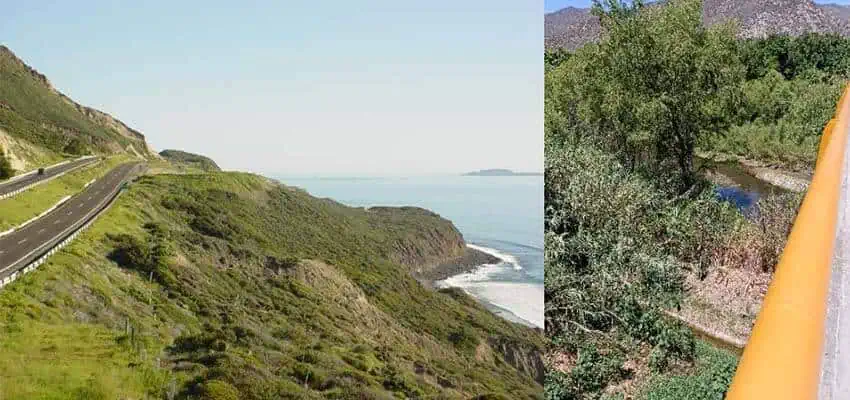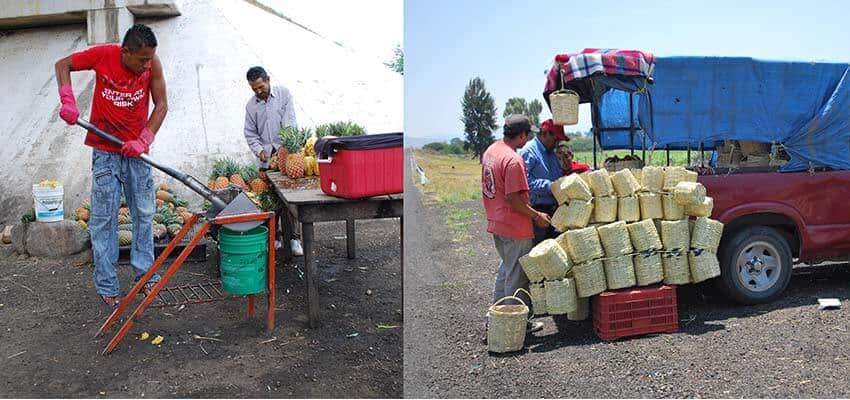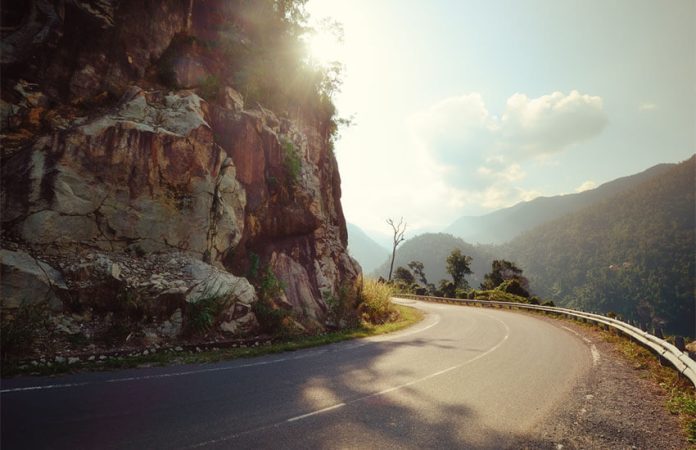If:
- time is of the essence and/or
- the cost of the tolls are not an issue and/or
- you need to drive at night and/or
- you are more interested in the destination than the trip and/or
- you are convinced that any non-tourist route will get you killed
this article may not be very helpful to you.
But what if you want to see more than asphalt as you drive around in Mexico?

Libres (non-toll highways) are the highways that have existed often long before the first cuota (toll road) was built in the 1950s.
But why drive a libre? The main reason is that you can see and interact with far more of Mexico. Libres take you to places cuotas do not, and along the way, you can stop just about anywhere and check out small towns, natural beauty, archaeological sites, farms, family restaurants and people selling local products along the road. I cannot tell you how many times my husband and I have just randomly stopped to take pictures.
You will also pass areas with industry and serious ecological damage, but this is part of Mexico too. Driving these roads is much like driving on North American highways 70 or more years ago.
Let’s start with what most hesitant foreigners worry about first: safety.
The general perception is that you are always safer on a cuota. Yes, and no: access on and off these roads is restricted, which can keep some bad guys away, but cars stuck in traffic here can also be easy pickings for criminals. More than 300 drivers found this out the hard way recently on a cuota road in Querétaro.
If you do get held up by some bad guys, the most important thing you can do is keep calm. The vast majority of crimes are still opportunistic and about money. Handing something over ends the situation quickly, but with some preparation ahead, you don’t have to give everything you have. Keep a minimum on you at hand, and even consider having a decoy wallet for this purpose — also for police looking for a bribe.
As for territories with narcos or political strife, use your head: learn something about the region before you drive into it. Follow the news, and see what issues and areas come up again and again. Talk to people in real life and on social media. If you are new to Mexico, start with areas closest to where you live.
The Facebook group On the Road in Mexico answers mostly safety-related questions, but other topics come up as well.

But the real issue is road conditions: libres go through just about every town and village as well as winding mountain passes, and that can be hard on a car’s suspension system; check yours before and after any major trip.
You’ll find surprisingly good roads, but assume that at least some sections will be in bad condition, especially in very rural areas and ones with rain-soaked or steep terrain. On some roads, locals make money by filling in the endless potholes with regular dirt and asking for donations.
Perhaps worse are the topes (speed bumps). Areas with any level of population will have them, but they also appear around factories, very rural bus stops, before very tight curves and more. If you are lucky, the tope will be well-marked with yellow paint or a sign, but you cannot assume this by any stretch of the imagination.
You have to keep a close eye on the road and develop a sixth sense. But you will occasionally hit one too fast simply because you were paying attention to something else. So my advice is do NOT drive libres at night; leave that to people who know these roads like the back of their hands.
If cost is your main reason to use libres, programs like Waze can help you decide which to use, and on what stretch. You can know what the tolls will be and how much longer the trip is on the libre. These programs also help you follow the libres since signs often are set up to steer people to the cuotas.
In semirural areas and well-traveled libres, gas stations and restaurants can actually be more frequent than on cuotas; but don’t assume this. Keep your gas tank as full as possible; don’t push your luck to the next gas station. Waze and Google Maps help but aren’t perfect.
If you already eat at small family restaurants in your town, the same rules apply to roadside restaurants throughout Mexico: if a lot of trucks are parked outside, the food is good. The further out you go, the fewer restaurants you may find, so bring a cooler with some solid nutrition (sandwiches, nuts, fruit). Don’t forget water. Coke and chips are easy to find but get old fast.
And be aware: very rural areas often have no cell or internet signal. Learn to use “human GPS” (my husband’s term). Online sources will give you ideas of what to see in rural Mexico, but don’t assume road signs or Google Maps will get you there.

Get as close as you can to your destination and prepare to talk to locals. You’ll need Spanish, but most people are very happy to help.
Like everywhere else, carry a spare tire, jack, oil and antifreeze. Be aware of what your car can or cannot handle, especially on dirt roads. Mexicans have helped me out when I had car trouble, asking for little or nothing in return, but you don’t want to abuse that.
And don’t go into rural areas if you need a certain level of hotel; they get more “basic” the more outside urban areas you are. More than once I have taken cold showers because a hotel boiler did not work. Check the room before you rent. Bring a pillow and blanket and maybe even a sleeping bag for the really out-of-the-way areas.
Keep a sweater/jacket/sweatshirt in the car. I cannot tell you how many times I got caught freezing because of a change of altitude and nighttime temperature. Also, toilet paper is essential. Hand gel and baby wipes are useful when sinks are lacking.
Let me end with the antithesis of the safety precautions: if you do not know where to go, ask people for recommendations. Trips to Pueblos Mágicos are also a good place to start.
Leigh Thelmadatter arrived in Mexico 18 years ago and fell in love with the land and the culture in particular its handcrafts and art. She is the author of Mexican Cartonería: Paper, Paste and Fiesta (Schiffer 2019). Her culture column appears regularly on Mexico News Daily.
